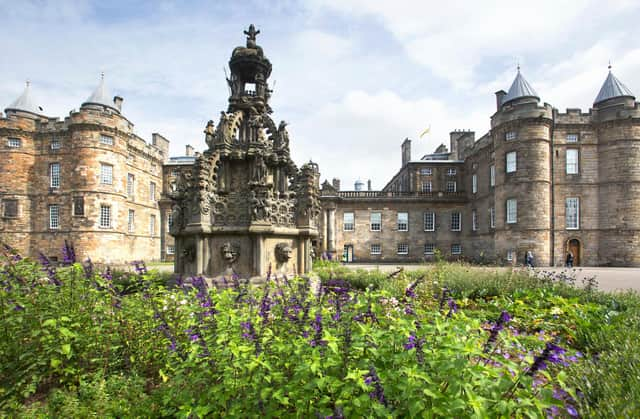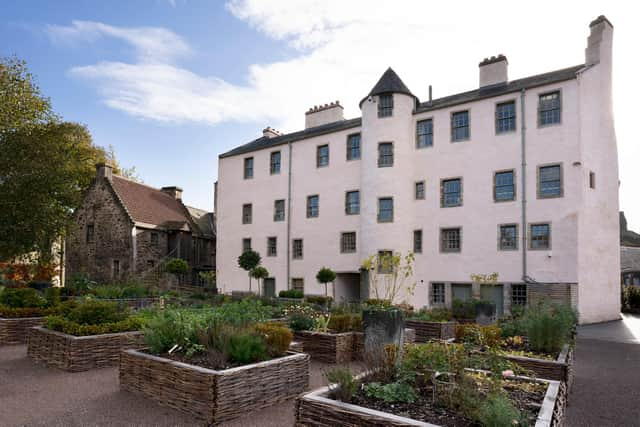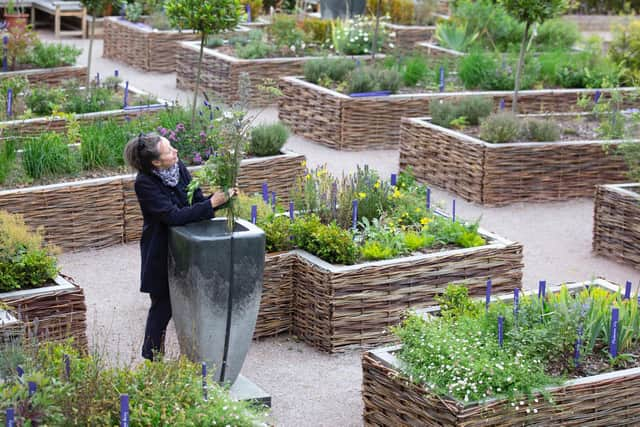New public garden opens at the Palace of Holyroodhouse with nod to its historical roots


Situated on Abbey Strand, the garden can be freely enjoyed year round by the people of Edinburgh and visitors to the palace, with seasonal planting inspired by some of the earliest recorded gardens on the site.
Adjacent to the new Abbey Strand Learning Centre, which was also created as part of the programme, it will also be used by school and community groups to explore how plants have been used to improve health and wellbeing.
Advertisement
Hide AdAdvertisement
Hide AdThe Trust’s Chairman, Prince Charles, Duke of Rothesay, also recorded a message to mark the opening of the garden.


The new garden consists of three distinct areas, each representing a phase in the palace’s 900-year history.
In the 15th-century monastic gardens of Holyrood Abbey, there is a meadow of medicinal plants including daisies, which were used to treat coughs and wounds; sorrel, once thought to cure ulcers, sores and ringworm; and mallow, used to treat scurvy.
Nearby, flowering bulbs, including crocuses, tulips and alliums, have been planted in a geometric pattern to reflect the design of 17th-century gardens.
Advertisement
Hide AdAdvertisement
Hide AdA third area reimagines the physic garden that was established in the palace grounds 350 years ago by the doctors Sir Robert Sibbald and Sir Andrew Balfour, two founding members of the Royal College of Physicians of Edinburgh.


Created in 1670 to teach students about the medicinal properties of plants and to provide pharmacists with fresh materials, the palace’s original physic garden was the first of its kind in Scotland and only the second botanic garden to be established in Britain.
The new physic garden contains medicinal and culinary plants that would have grown in the 17th-century garden which include fennel – once used to aid eyesight, to treat the bites of snakes and mad dogs, and as an antidote to poisonous mushrooms – and borage, which, when added to wine, was said to impart courage and treat eye problems, heart disease and jaundice.
Other flower beds contain plants, such as lavender, bergamot and lemon balm, that were used for scents, dyes and insecticides.
Advertisement
Hide AdAdvertisement
Hide AdFive years after the first physic garden was created at the palace, the plants were moved to a bigger site at Trinity Hospital, now the location of Platform 11 at Waverley Station, and then to Leith.
In 1820 the garden was established in Inverleith, now the Royal Botanical Gardens.
James Sutherland, the self-taught gardener who oversaw the move of the physic garden from the Palace to the Trinity Hospital site, recorded the plants in Scotland's first botanical publication, Hortus Medicus Edinburgensis and became the first Regius Keeper, a title now given to the head of the Royal Botanic Garden Edinburgh. In 1699 was made the first King’s Botanist in Scotland.
Tim Knox, Director of the Royal Collection, said: “2020 marks 350 years since the creation of the first physic garden at the Palace. I am delighted that this new public garden, an important element of the Future Programme project at the Palace of Holyroodhouse, has been completed in this anniversary year and can be enjoyed by our visitors and the local Edinburgh community alike.”
A message from the Editor:
Thank you for reading this article. We're more reliant on your support than ever as the shift in consumer habits brought about by coronavirus impacts our advertisers.
If you haven't already, please consider supporting our trusted, fact-checked journalism by taking out a digital subscription.
Comment Guidelines
National World encourages reader discussion on our stories. User feedback, insights and back-and-forth exchanges add a rich layer of context to reporting. Please review our Community Guidelines before commenting.